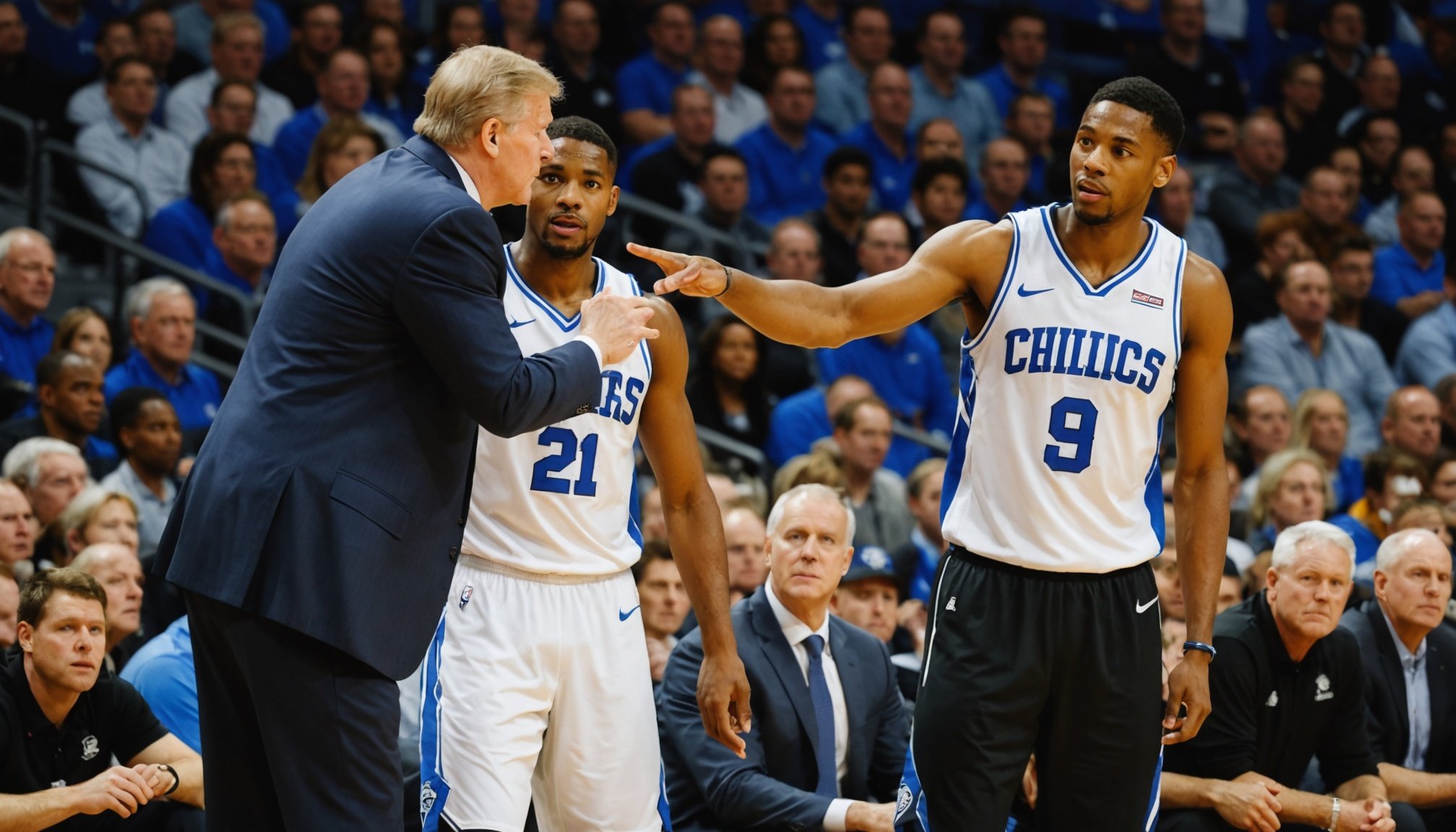Understanding Player Conflicts in Basketball
Basketball is a high-intensity sport, where player conflicts can arise due to competitive in-game dynamics. There are common sources of conflict among basketball players which include rivalry, miscommunication, and emotional outbursts. These conflicts often stem from conflict triggers such as perceived favoritism by coaches or disagreement over playing strategies.
Psychological factors play a crucial role in influencing player behavior. Stress and pressure to perform can exacerbate tensions, leading to disputes. For instance, a player feeling undervalued may be more prone to confrontations with teammates or coaches. It’s essential to understand these psychological aspects to effectively manage conflicts and maintain harmony within the team.
This might interest you : Revitalize and Recharge: Proven Recovery Strategies for UK Basketball Players Facing Mid-Season Fatigue
Unresolved conflicts can significantly impact team performance, leading to decreased morale and collaboration. Teams with ongoing disputes might struggle with coordination, which is vital in basketball. A lack of synergy on the court can translate into missed opportunities and lower game success. Addressing these issues promptly and effectively ensures that the team’s focus remains on the game rather than interpersonal disputes. It’s critical for coaches and players alike to identify and mitigate conflicts swiftly, to keep the team in top form both mentally and physically.
Effective Communication Strategies for Coaches
In basketball, enhancing communication skills is vital to resolving player conflicts effectively. Coaches must instil open communication within the team to mitigate tensions. A foundation of active listening is essential, where coaches attentively listen to players’ concerns, showing genuine interest and empathy. By understanding each player’s perspective, conflicts can be addressed and resolved more amicably.
Also to see : Unlocking peak mental performance: how meditation transforms uk basketball players
Constructive feedback also plays a critical role. It is crucial for coaches to provide clear, actionable advice that players can use to improve. Instead of focusing on faults, suggest positive changes to foster growth. This approach encourages players and strengthens team dynamics.
Empathetic responses are another powerful tool. Acknowledging the emotions involved in conflicts can defuse hostility and promote understanding. Coaches should convey compassion and consideration, allowing players to feel heard and validated.
By combining open communication, active listening, constructive feedback, and empathetic responses, coaches can create a supportive environment that empowers players to overcome challenges. Implementing these strategies not only resolves existing issues but also prevents future conflicts, contributing to a harmonious team atmosphere. Coaches adapting these techniques notice improved player relationships, leading to enhanced performance on and off the court.
Conflict Resolution Techniques for In-Game Scenarios
Navigating the high-pressure environment of basketball requires effective conflict resolution strategies that coaches can readily deploy during games. When tensions flare, the coach acts as a crucial mediator, guiding players towards resolution and refocusing energy on the game.
The Role of the Coach in Mediation
Coaches significantly influence the atmosphere by implementing mediation techniques. By addressing conflicts directly and impartially, they establish a space for open dialogue. Coaches encourage players to express concerns, listen actively, and foster understanding.
Step-by-Step Conflict Resolution Process
An organised, step-by-step approach proves invaluable in managing on-court disputes. First, identify the conflict’s root by observing interactions and communication breakdowns. Then, encourage affected players to articulate their feelings and perspectives. Finally, guide them towards consensual solutions, emphasising respect and compromise.
Encouraging Peer Mediation Among Players
Fostering a culture of peer mediation empowers players to resolve minor issues autonomously. Coaches can nurture leadership qualities by training select team members in mediation techniques. These player mediators can then facilitate discussions, uphold team values, and reinforce sportsmanship. Cultivating these skills promotes harmony and resilience, bringing the team closer together and ensuring they work as a unified front during games.
Analysis of Successful Interventions by Coaches
Examining case studies of successful coaching interventions offers invaluable insights for managing player conflicts. These real-world examples showcase the strategies employed by seasoned coaches when resolving disputes.
In the UK, several interventions stand out where conflicts were turned into opportunities for growth. For example, one basketball coach employed structured communication sessions to break down barriers between players. This approach not only resolved existing tensions but also improved overall team chemistry.
Lessons learned from these interventions emphasise the necessity of addressing conflicts promptly and transparently. Coaches discovered that facilitating open conversations allowed grievances to be aired without the fear of reprimand, leading to more robust, honest dialogue within the team.
The long-term benefits of such interventions are notable. Teams that embraced these strategies often experienced improved performance and morale. By fostering an environment where respect and cooperation are prioritised, the coaches established a foundation for ongoing success. Players became more adept at resolving conflicts independently, a testament to the effectiveness of the intervention. These examples illustrate the amplified team dynamics and highlight the crucial role of adept coaches in steering the team back on course during challenging times.
Psychological Techniques to De-escalate Conflicts
In basketball, effective de-escalation strategies are essential for managing heated situations. Leveraging psychological techniques can transform conflict into an opportunity for growth and understanding.
Understanding emotional triggers is a starting point. Recognise that emotional intelligence is crucial for identifying cues that might escalate tensions. A player’s reaction often reveals underlying emotions like frustration or disappointment.
Implement techniques that actively reduce tension. Encourage players to take deep breaths or step back momentarily to regroup. Suggest visualisation exercises where players imagine resolving conflicts constructively. These methods calm emotions and pave the way for dialogue.
Emotional intelligence in coaching involves empathy and adaptability. Coaches should approach each conflict with an open mind, seeking to understand rather than judge. By demonstrating empathy, players feel heard, and conflicts are more likely to resolve amicably.
Additionally, teach players to recognise their emotional responses and regulate them effectively. These skills help prevent minor issues from becoming significant disputes. Coaches play a pivotal role in guiding players to manage their emotions constructively. Cultivating these abilities not only de-escalates existing conflicts but also equips teams to handle future challenges efficiently and maintain focus on their collective goals.
Building a Positive Team Culture to Prevent Conflicts
Creating a robust team culture is essential to prevent player conflicts in basketball. A strong team-oriented environment reduces the impact of conflict triggers, enhancing in-game dynamics and team cohesion. By emphasizing shared goals and mutual respect, teams can mitigate tensions before they escalate.
One effective strategy is implementing team-building activities. Activities that focus on collaboration and trust help foster unity among players. These exercises can range from problem-solving games to off-court bonding sessions, all aimed at strengthening relationships and building trust.
Promoting positive reinforcement contributes significantly to conflict prevention. Acknowledging and rewarding cooperative behaviours encourages players to support their teammates, motivating positive interaction. This approach further cements a culture of respect and appreciation within the team.
Additionally, clear communication of expectations and team values is crucial. Coaches should discuss and establish behaviour norms that align with the team’s objectives. By fostering an environment grounded in positivity, respect, and open dialogue, players are more likely to resolve disagreements amicably, resulting in reduced conflicts.
Overall, cultivating a positive team culture helps pre-empt conflicts by enhancing player relationships, improving team morale, and promoting lasting collaboration, crucial for a successful basketball team.











